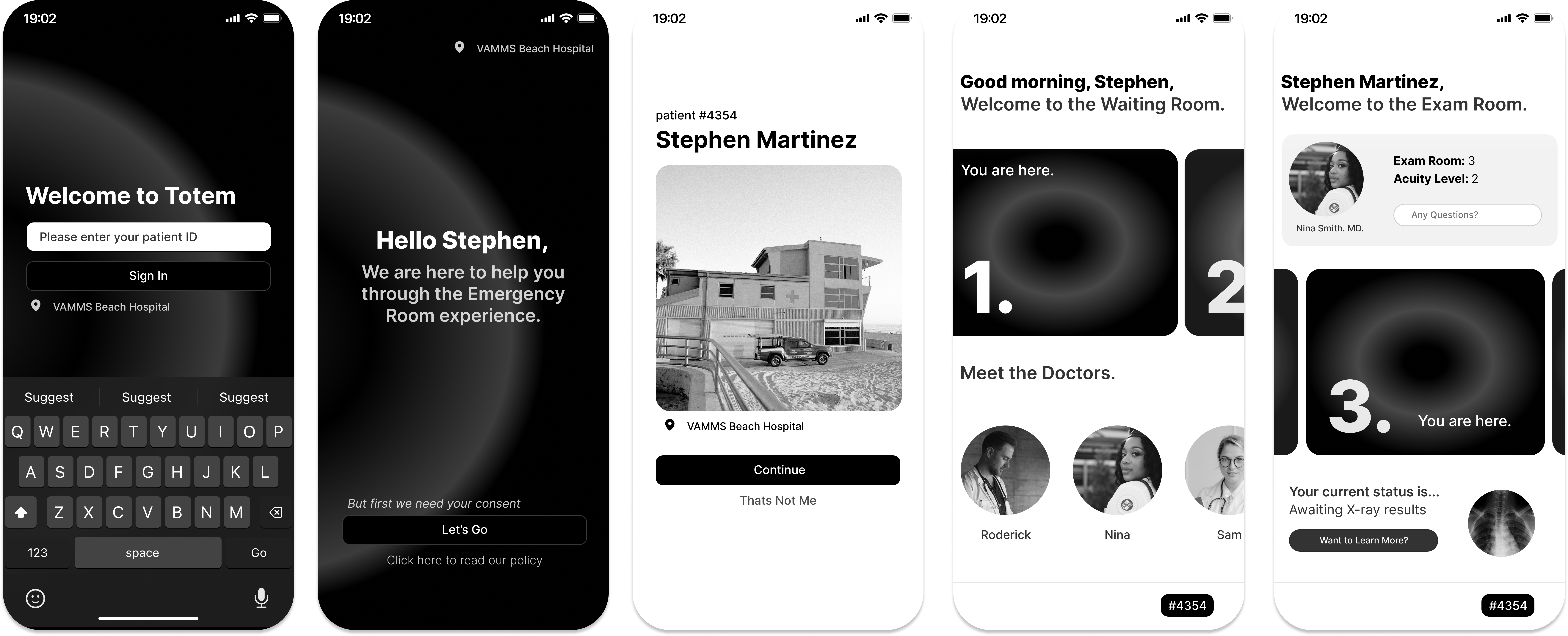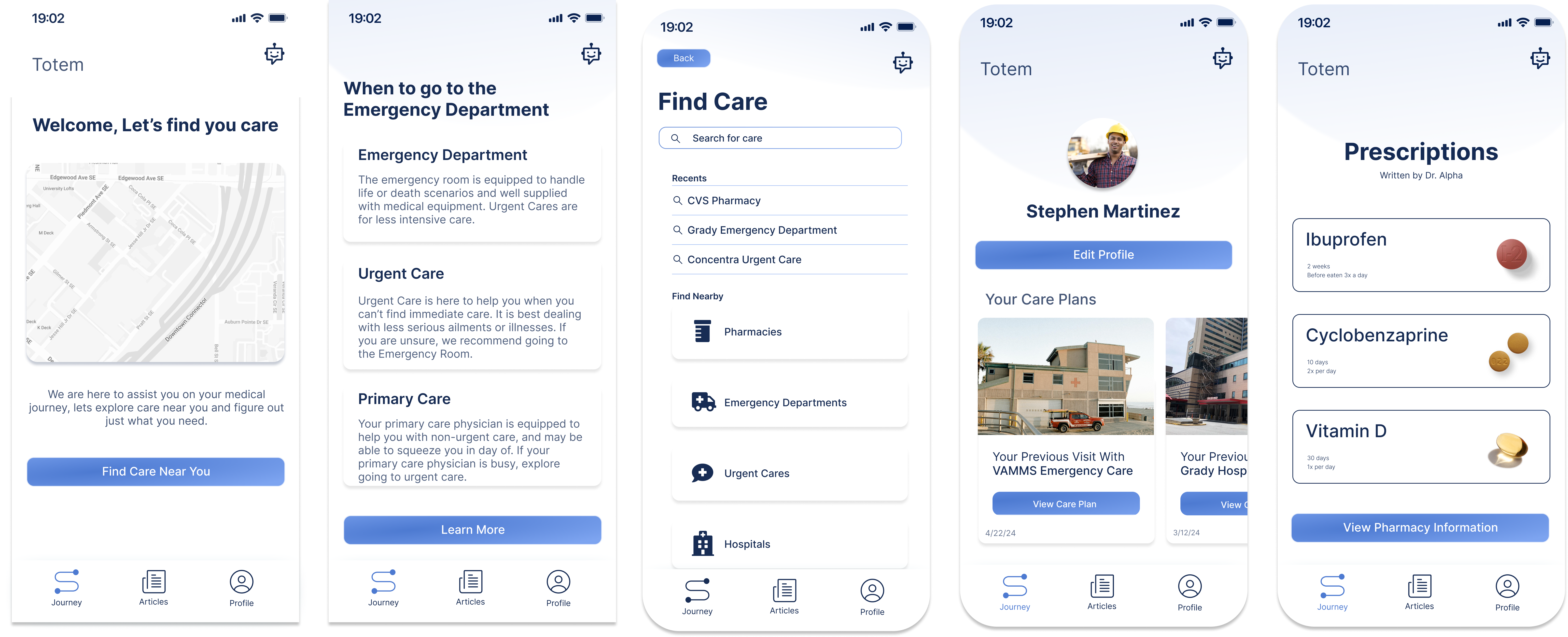Interaction Design for Screens (8 weeks)
UI/UX | Research | Prototyping
Totem
Totem is an Emergency Room information system that creates a personalized patient journey through custom modules.
The orientation platform bridges informational gaps between physicians and patients, giving guidance through an unexpected and often stressful experience.
The Problem
Post-COVID, emergency rooms are strained, overcrowded, and confusing. Patients are sicker, facilities are outdated, and many systems struggle to communicate efficiently.
We explored these findings in person through tours, and interviews. We worked with local hospitals and observed the context of popular electronic medical record (EMR) systems.
- Communication Disconnect:
Doctors have a lot on their plates, and patients have a lot of questions. - Confused Patients:
Many patients don’t know when to contact their primary care physician or go to urgent care. - Inaccessible Records
Interoperability issues between EMRs and hospitals create large gaps of waiting in the emergency room.
- Perceived Wait-time:
Uncertainty, stress, and lack of communication allows many patients to feel as if they’ve been waiting too long. In some cases, they may even leave the E.R. without receiving care.
High-trust systems like EPIC offer many solutions for physicians but don’t offer comprehensive support to patients. This leaves an opportunity area to create a patient-centered information platform that focuses a patient’s dynamic journey.
Many hospitals offer curated information solutions to patients, but the experience is clunky and hard to find. Many patients are unaware of these apps, and the resources offered are often linked to separate webpages.

We began testing low-fidelity wireframes, blocking information modules, and planning the mobile web interface.
We found it was easiest for physicians to build their “Totem” experience with specialized modules supported by user-data, and contextual factors.
After testing with patients and physicians, we created a basic journey of check-in, assessment, examination, and discharge. Each step would include articles tailored to the patients’ and the hospital’s needs. The feedback we received was to highlight wayfinding, give less specific information during assessment/check-in, and ensure no information is given without physician sign-off.

Examination and Discharge give patients more specific information, updating them on results, medications, and saving their discharge information. It also allows physicians to update patients on their tests and exams while they are busy running them.

Once the active journey of Totem was finalized, we pivoted towards re-usability and patient profiles. It is important that Totem evolves with the patient, so we thought about how we could help beyond the emergency department. The inactive profile is accessed without a hospital code, and connects a patient with vital information before, or after they receive care.
